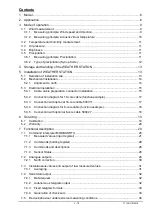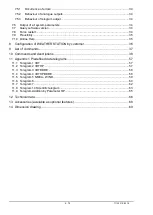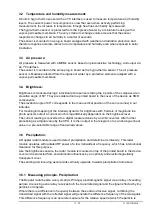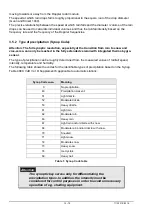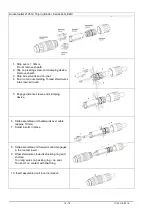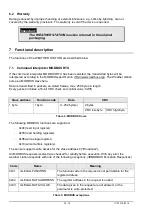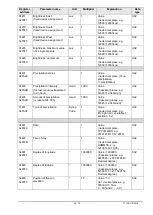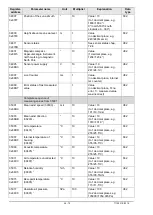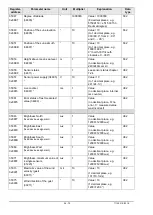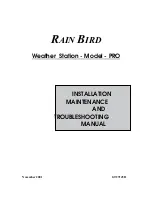
11 - 70
71130/11E/0318
3.2 Temperature and humidity measurement:
A built-in hygro-thermo sensor with an I
2
C interface is used to measure temperature and humidity
levels. The sensor's power consumption is so low that even when actively performing
measurement, the increase in temperature through heat loss can hardly be measured.
The hygro-thermo sensor is protected from the ingress of water by a miniature housing with a
vapour-permeable membrane. The very small air exchange volume means that the sensor
responds to changes in air humidity in a matter of seconds.
The sensor is mounted on a plug-in board equipped with weather and radiation protection and
therefore supplies accurate values for air temperature and humidity even when exposed to solar
irradiation.
3.3 Air pressure:
Air pressure is measured with a MEMs sensor, based on piezoresistive technology, and output via
an I
2
C interface.
The sensor is mounted on the same plug-in board as the hygro-thermo sensor. The air pressure
sensor is likewise protected from the ingress of water by a protective element equipped with a
vapour-permeable membrane.
3.4 Brightness:
Brightness is measured using 4 individual photo sensors facing the 4 points of the compass at an
elevation angle of 50°. They are soldered onto a printed board in the cover of the device as SMD
components.
The elevation angle of 40° corresponds to the mean vertical position of the sun (equinox) in our
latitudes.
For meaningful mapping of the intensity dynamic for brightness with 5 orders of magnitude the
photo sensors output a current, which is logarithmically dependent on the brightness level.
The current reading is converted to a digital measured value by an A/D converter. After further
processing as a digital value by the CPU, it is then output in the telegram or as an analogue linear
value in a pre-selectable range of measured values.
3.5 Precipitation:
A Doppler radar module is used to detect precipitation and determine its intensity. This radar
module operates with radiated RF power of a few milliwatts at a frequency, which has international
clearance for this purpose.
Like the brightness sensors, the radar module is mounted on top of the printed board in the device
cover and is protected from environmental influences by an optically and electromagnetically
transparent cover.
The sending and receiving aerial points vertically upwards, towards precipitation from above.
3.5.1 Measuring principle: Precipitation:
The Doppler radar beams a very small (mW range) electromagnetic signal via an array of sending
aerials. A receiving aerial array receives both the transmitted signal and the signal reflected by tiny
particles or droplets.
Where there is a difference in frequency between the send and receive signal, combining the
transmitted signal with the reflected signal will generate the difference frequency of the two signals.
This difference frequency is an accurate measure for the relative speed at which the particle is



